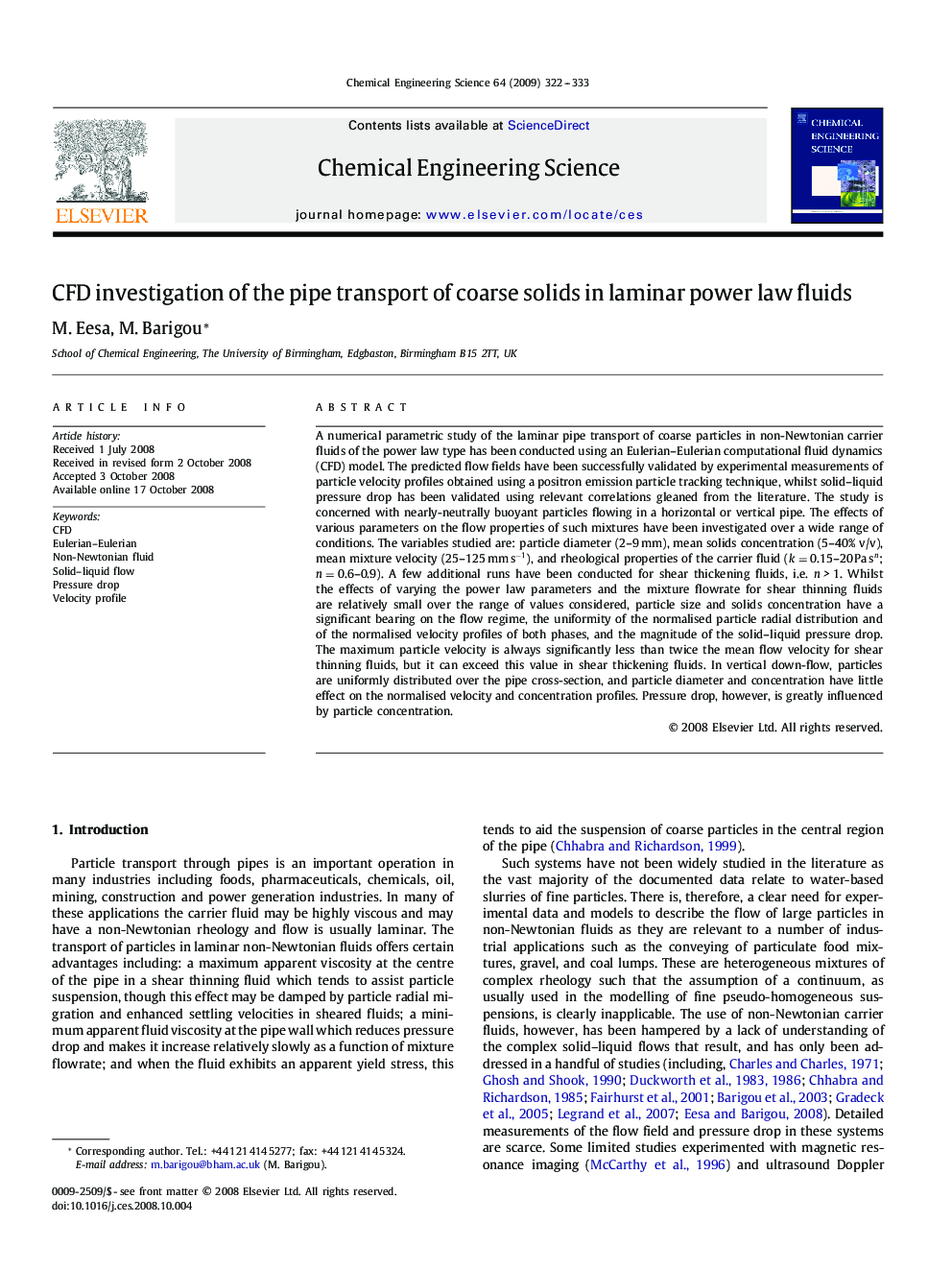| کد مقاله | کد نشریه | سال انتشار | مقاله انگلیسی | نسخه تمام متن |
|---|---|---|---|---|
| 158024 | 456992 | 2009 | 12 صفحه PDF | دانلود رایگان |

A numerical parametric study of the laminar pipe transport of coarse particles in non-Newtonian carrier fluids of the power law type has been conducted using an Eulerian–Eulerian computational fluid dynamics (CFD) model. The predicted flow fields have been successfully validated by experimental measurements of particle velocity profiles obtained using a positron emission particle tracking technique, whilst solid–liquid pressure drop has been validated using relevant correlations gleaned from the literature. The study is concerned with nearly-neutrally buoyant particles flowing in a horizontal or vertical pipe. The effects of various parameters on the flow properties of such mixtures have been investigated over a wide range of conditions. The variables studied are: particle diameter (2–9 mm), mean solids concentration (5–40% v/v), mean mixture velocity (25–125 mm s−1), and rheological properties of the carrier fluid (k=0.15–20 Pa sn; n=0.6–0.9). A few additional runs have been conducted for shear thickening fluids, i.e. n>1. Whilst the effects of varying the power law parameters and the mixture flowrate for shear thinning fluids are relatively small over the range of values considered, particle size and solids concentration have a significant bearing on the flow regime, the uniformity of the normalised particle radial distribution and of the normalised velocity profiles of both phases, and the magnitude of the solid–liquid pressure drop. The maximum particle velocity is always significantly less than twice the mean flow velocity for shear thinning fluids, but it can exceed this value in shear thickening fluids. In vertical down-flow, particles are uniformly distributed over the pipe cross-section, and particle diameter and concentration have little effect on the normalised velocity and concentration profiles. Pressure drop, however, is greatly influenced by particle concentration.
Journal: Chemical Engineering Science - Volume 64, Issue 2, January 2009, Pages 322–333